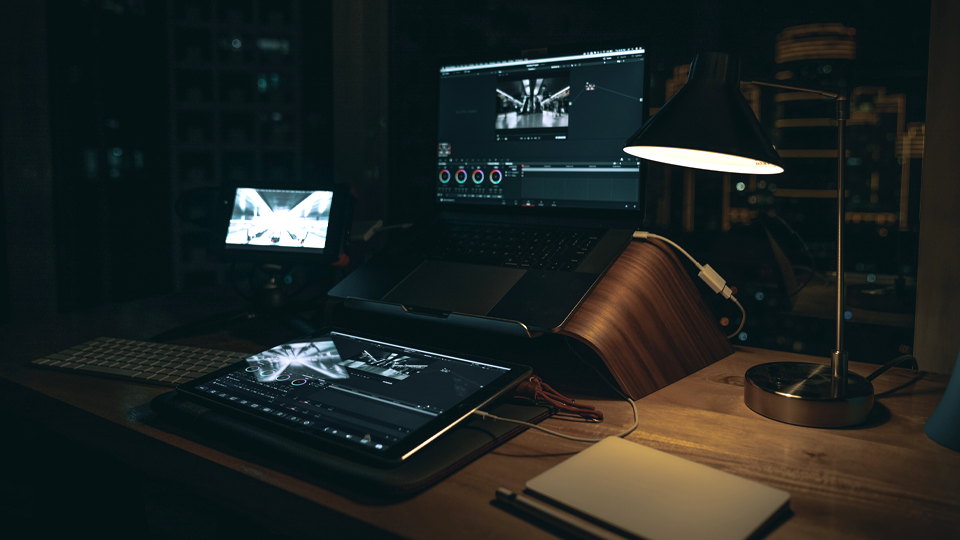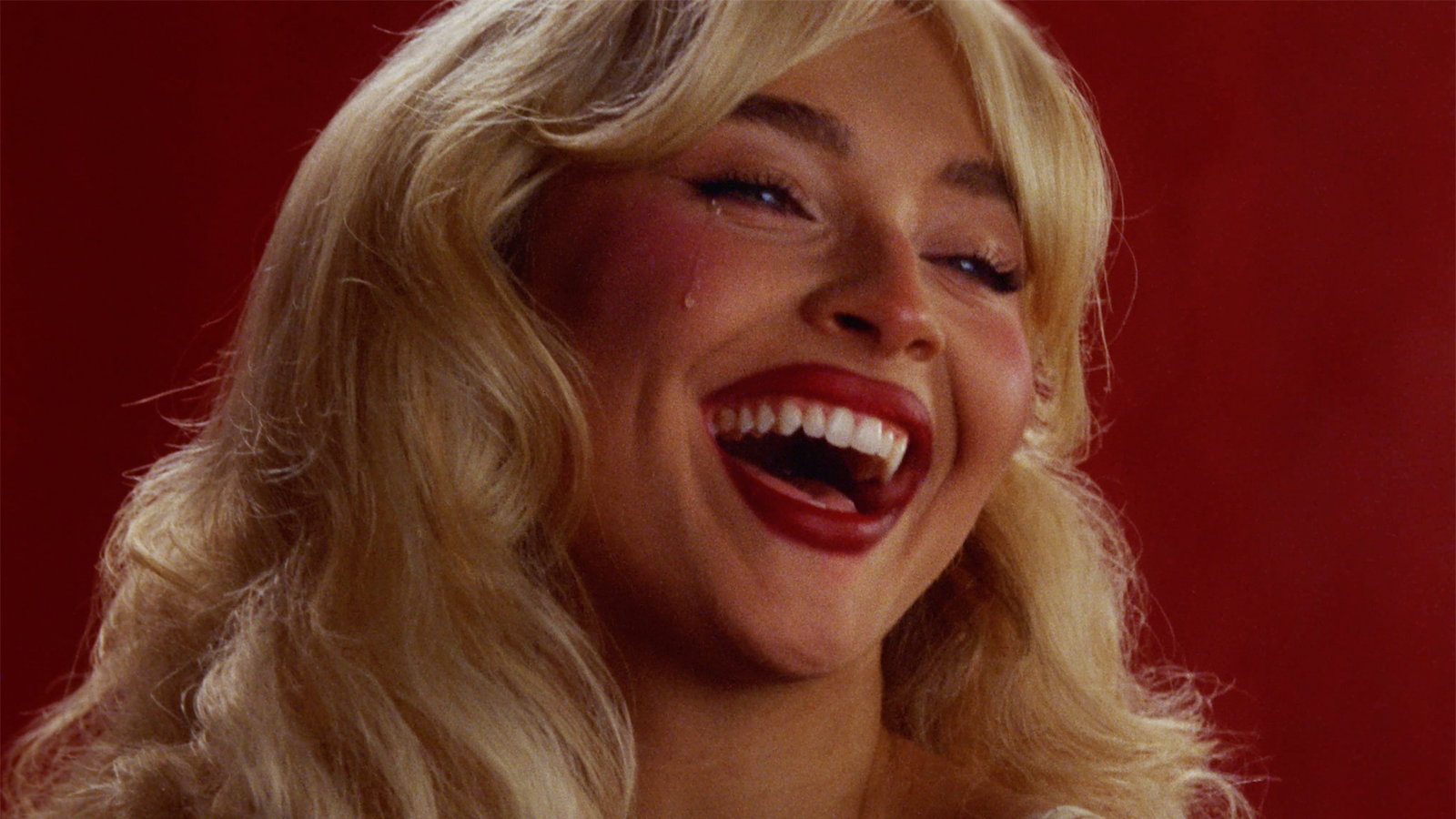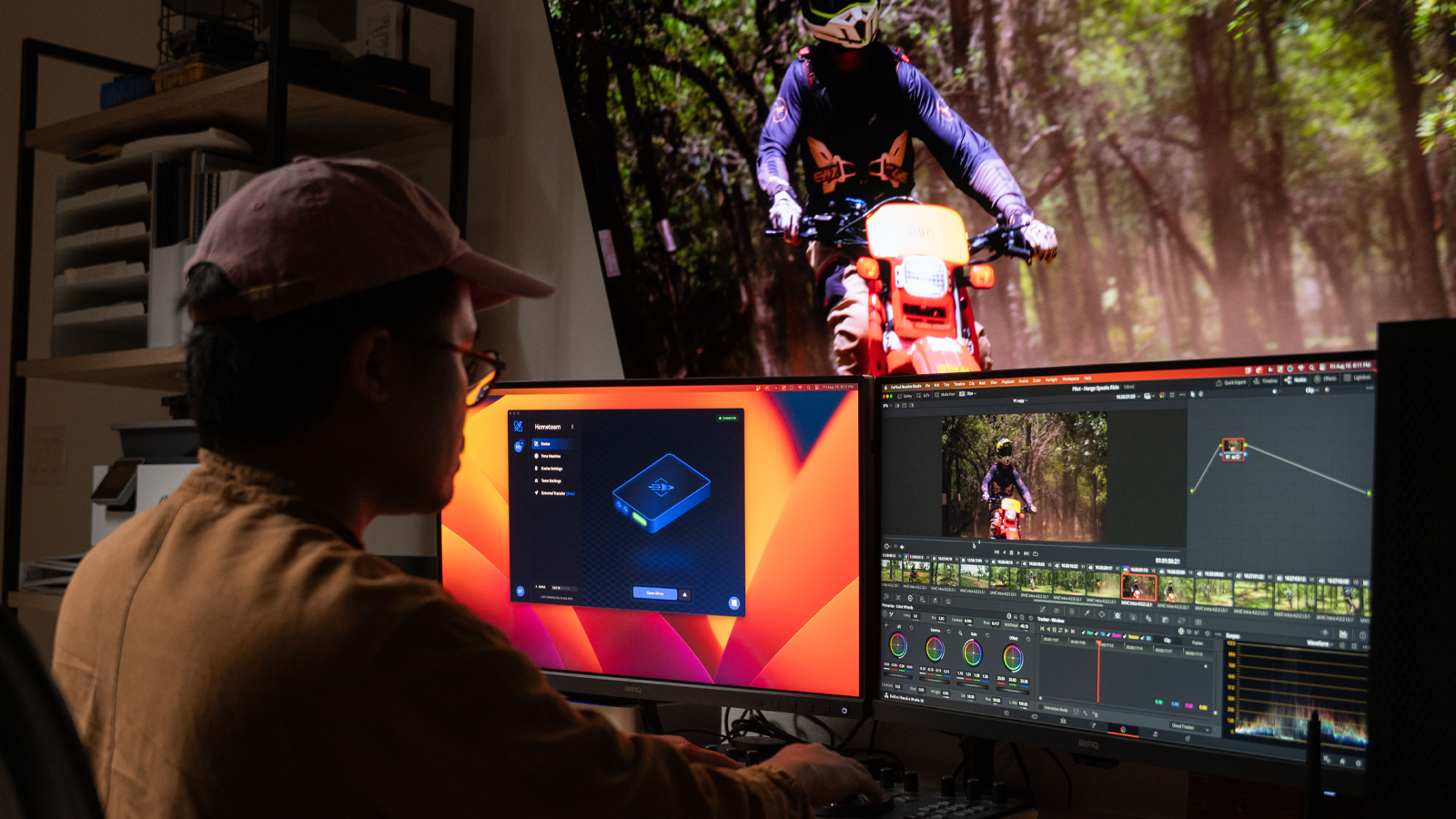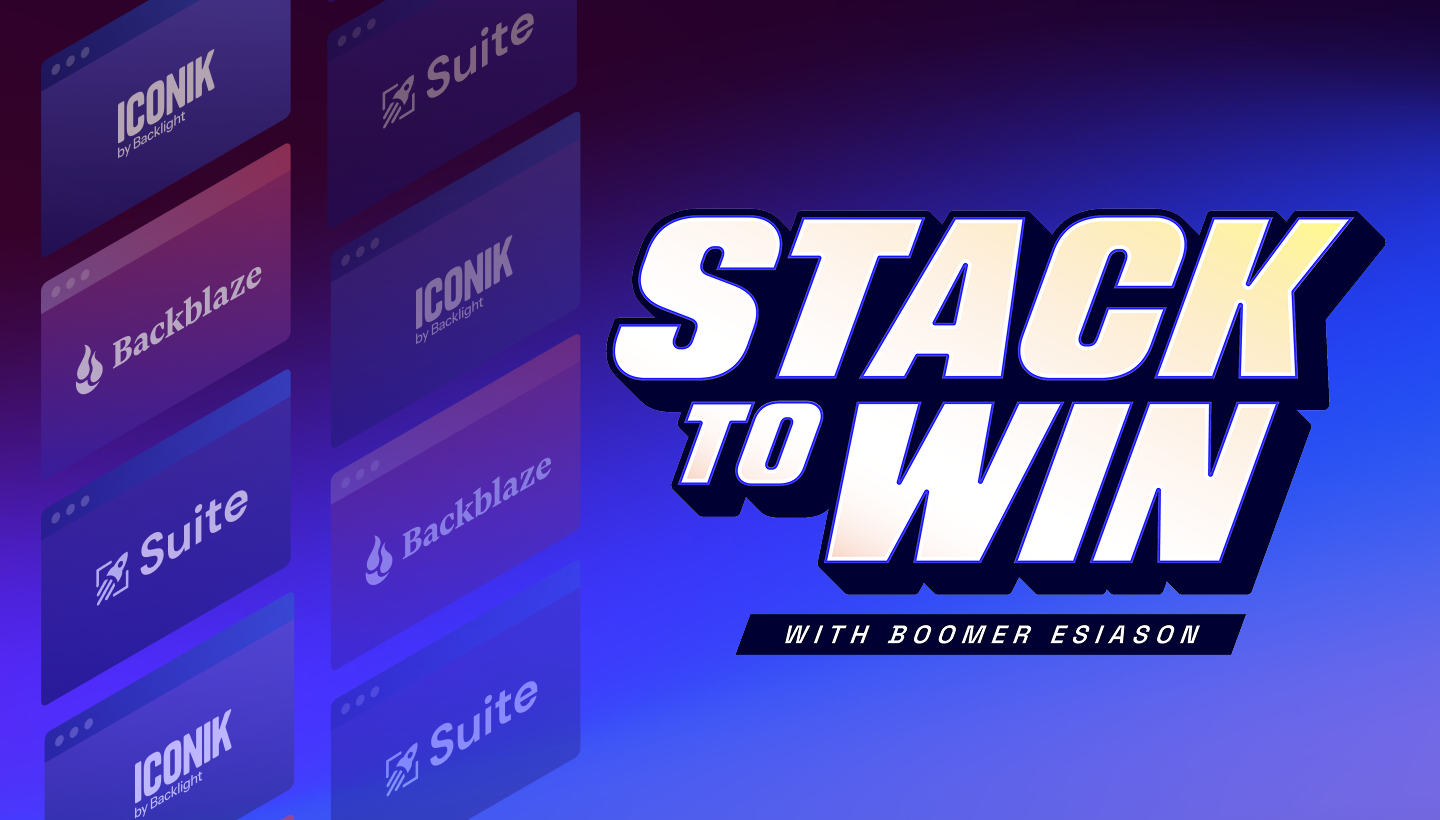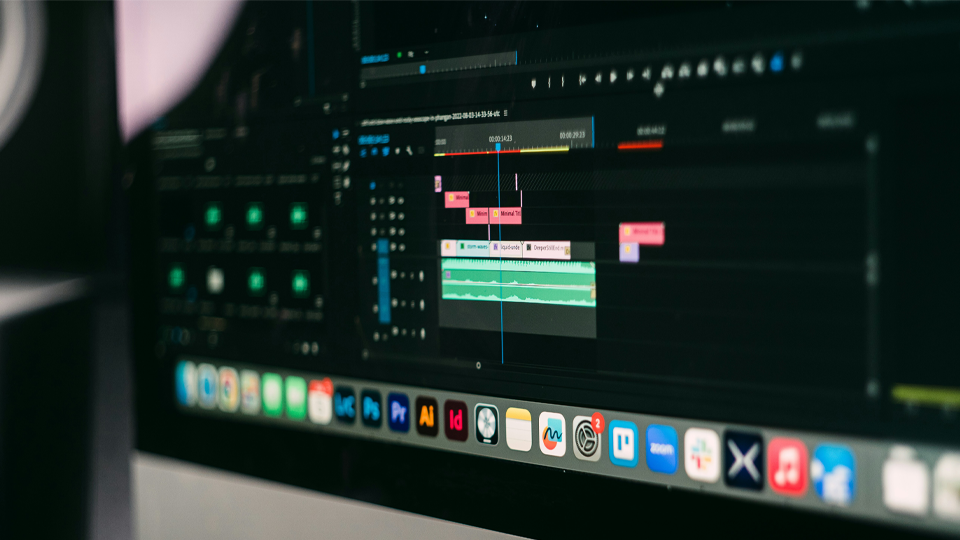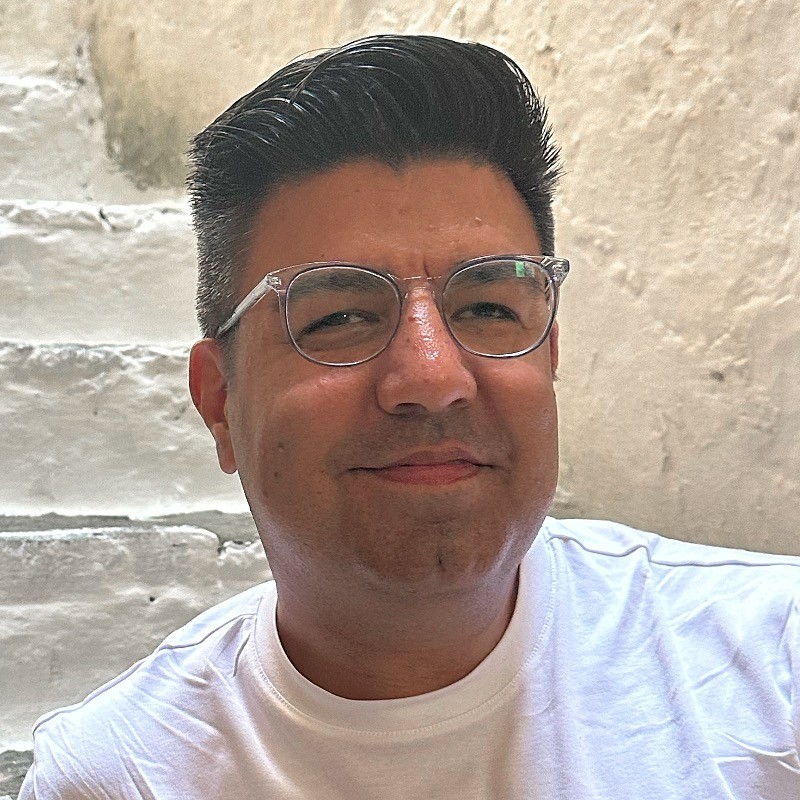Inside the studio: School of Motion’s Joey Korenman on cultivating originality & nurturing creativity
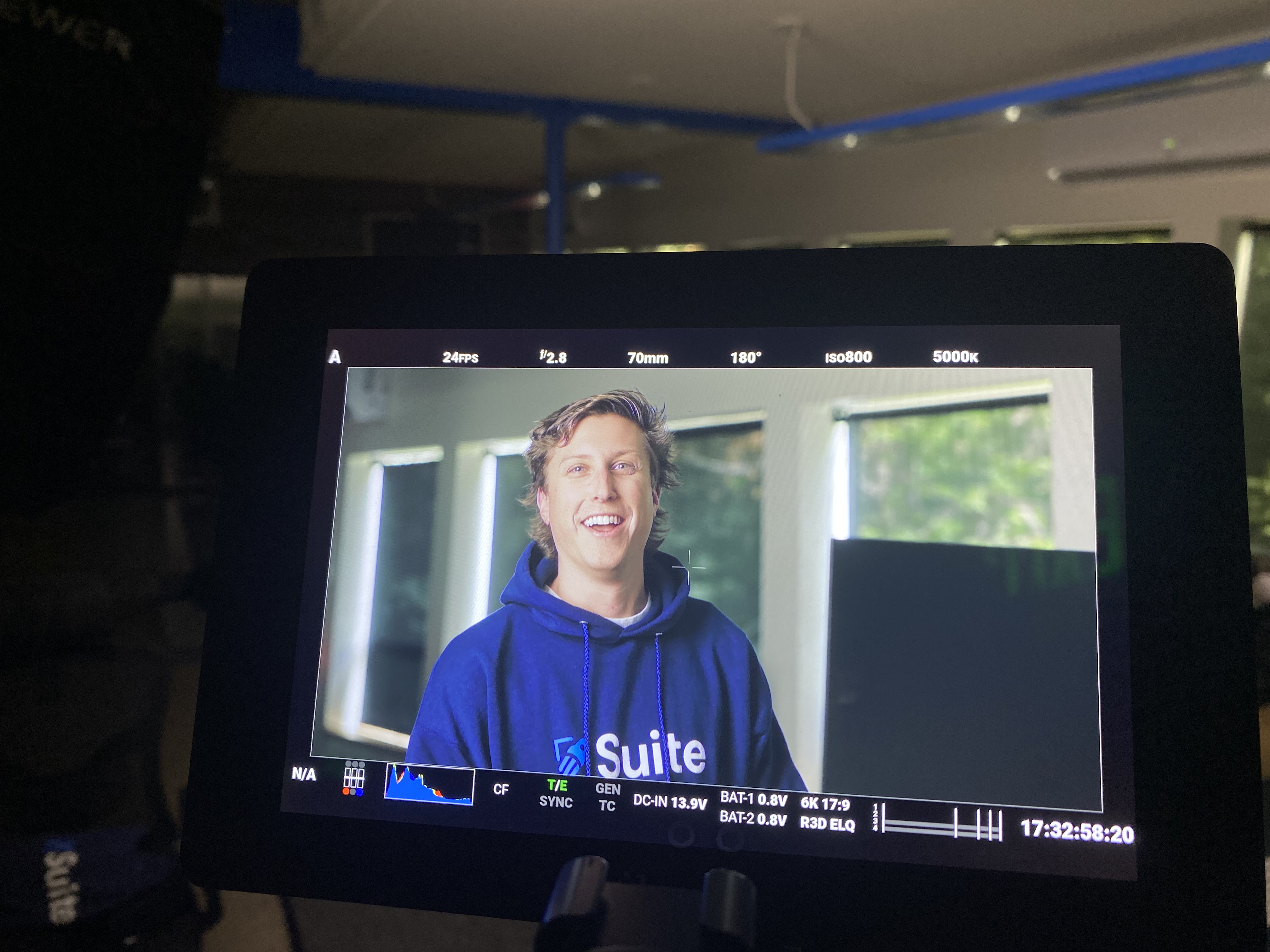
Samuel Taggart

10 Minutes

Inside the Studio: Dive into insightful interviews that uncover the methods, challenges, and inspirations of today's leading filmmakers & artists straight from the studio. Discover the story behind the art on The Render.
In the fast-paced world of motion design and animation, Joey Korenman and his online learning platform, School of Motion, are taking the creative community by storm. Since humbly launching over a decade ago with just a handful of video tutorials, the education hub has become known as the paramount resource for emerging motion designers, 3D animators, and graphic artists looking to up their knowledge of Adobe After Effects. At the same time, Korenman’s name has become synonymous with motion graphics education and helping others find freelance success.
Simply put, within his niche freelance-design community, Korenman is “the guy to know.” A former creative director working for some of the biggest brands around—McDonalds, Progressive, and Subway, just to name a few—Korenman first stepped into teaching at the Ringling College of Art & Design. However, within a year, he pivoted his focus to running School of Motion full-time and this set Korenman on his current trajectory.
Today, Korenman is one of the most influential educators for motion graphics artists and digital animators; he’s the author of a best-selling book about the freelance lifestyle; and his efforts at School of Motion have grown it into a globally recognized resource on the topic. Now, take a moment to read this exclusive interview to hear Joey’s first-hand advice on mentorship, becoming an impactful collaborator, and how to broaden the scope of your creativity.

How has your perspective on motion design changed since becoming an educator?
When you're doing something every day for 10 years, especially like teaching motion design, you're constantly learning. Every single project, you learn something; and [in this space] there are new tools coming out almost every single day. Moving into teaching has taught me the importance of cultivating that beginner mindset. The hardest thing about it is training yourself to forget what you know. When you're doing client work, you're doing the opposite—you're trying to keep everything in your head so that you can be in flow state and operate as quickly as possible.
So, being an educator reminds you how learning these skills can be a continual practice.
Exactly. I’ll use a ski & snowboard metaphor here—when you first learn these things, you have to think about every single little micro-movement. Teaching animation is very similar. A very common thing to teach beginner animators is how to make a ball bounce because [on the surface] it's a pretty straightforward exercise. But if you break down the components of a ball bounce, there's actually three or four principles involved, and each is complicated in its own way. That taught me that if you're a lazy thinker, you won't be a good teacher. You have to constantly examine your own methodology ask yourself, “Why do I do things this way?” You have to remember if you're teaching someone how to ski a mogul, you need to tell them how to do it. They won't know automatically like you already do.

What do you find is one of your favorite classes or topics to teach others?
My thing is teaching animation in After Effects. Within that, my favorite topic, partly just because of the way it looks, is called Follow Through or “overlapping motion.” Basically, it's movement in a wave-like motion, like when a character waves their arm. I love showing how to actually execute it inside After Effects—it’s one of those things where as soon as you start doing it, everything you touch looks more professional, more polished. And you have this sort of instant cool you can add to a project. I also love it because it's a simple concept—it's easy to learn, but hard to master.

What are some of the biggest habits you try to instill in your students?
There's two phases to it. In the beginning, what separates the good students and the great students is that the latter will sweat over the details to a level that others won't. There are some students that just aren’t satisfied and they keep going, hammering, and asking for more feedback. In the beginning, that's the sign of a good student and, later on, a good employee. If you're a junior artist, trying to get your foot in the door, that kind of work ethic goes really far.
Phase two of your career, then, is not so much about having the knowledge because everybody at that stage has the knowledge, too. Now it's about how efficient can you be. If it still takes you two weeks to do an animation, but the person next to you can do it in a week, they've already moved along to learning new techniques. Essentially, they've lapped you. My best advice for students is to be obsessed over the details and outwork everybody. That's the secret.

How can creatives elevate their career path from being a technical specialist to a leader in the room?
When I started my career in the early 2000s, there weren't a lot of people doing motion design, especially After Effects. That was just a rare skill. In that environment, just knowing the technical skill of After Effects was enough to make six-figures every year. But increasingly more artists started getting involved.
The next step was realizing that just knowing how to use the tools wasn't enough. That's because there's this thing called “art,”[laughs] and there are design and animation principles behind it. So you need to know something about both sides, only then can you use the tools in the best way. Design and animation straddle that line—they're art forms, but they’re also trades. There's artistry involved, but the act of doing it is a trade.
So, now what's the separator? It's your ideas, the vibe that you bring, and how you put your unique perspective into the thing you're making. What helps me is staying in the flow state, and I’m open to doing anything to stay focused on that process. I'm constantly trying to find ways to shave five minutes here-and-there off of my workflow. The product Suite offers literally does that—it's been huge for School of Motion. With editors and content creators all over the world, it's so nice to be able to jump into Suite and open up the edit instantly. It lets your brain stay on the creative stuff, the important stuff. That's where you want to be, not so much worried about the tools—but about the craft. When you get to this stage, try to figure out how to amplify that unique voice in your head.

What current trends are people talking about in your circles?
In motion design, it's almost exclusively about AI tools. That's the elephant in the room; it's very disruptive, and professional artists are unsure of how it's going to impact their ability to put food in their mouth. But there's a deeper, more philosophical question. If AI tools like Midjourney and DOLLE-3 can make something that’s just as good, or even better, than I can create, in a fraction of the time, what is my value as an artist?There's an answer to that, but it gets complicated. That's what's really interesting to me right now.
What’s one piece of advice you can share on staying inspired?
When I first went freelance years ago, I was having beers with another designer asking for some advice. He said you should learn composition and learn this and that. But then he told me that the best advice would be to travel. His point was when you work on a computer, especially these days with social media, you get into echo chambers and you're in a little bubble where everything starts to look the same. But when you go to, say, Japan or the Middle East, an American or Western European might see colors and patterns that look completely alien, and it explodes your brain. Traveling exposes your mind to these different combinations. It’s important to see more.

How do you like to encourage big picture thinking?
I always encourage people to practice "mind mapping." It’s the process of taking the most boring version of your idea and exploding it out slowly… you take the core idea and then you think of a word like free-association. But it's even harder the further you get into your career. Like, if you came to me and said you needed a video ad for Suite to promote cloud-based storage—my brain immediately shows me a finished video. I can see it. Even if parts of it are vague, and we haven't even talked about the script, I can see something. That's a problem because my brain is just grabbing at things I've already seen, and that I know will work in the circumstance. But that is not how you get a unique idea. And it’s not the way you should approach a project. You have to break it down.
Over the years, what content produced by School of Motion has resonated the most with your audience?
There are there two types of content that seem to really resonate, and they're on the extremes. Some of our most watched content on YouTube are just very concrete, specific tutorials. When you get into animating, and especially motion design and After Effects, everything seems amazing when you see it—each new technique is like seeing a magic trick and not knowing how it's done. Our content on YouTube can show you exactly how it's done, and then you can go and do that same magic trick but make your own variation of it.
I'd say that the other content that really resonates… shows people what it actually looks like to be a motion designer. You can teach someone how to do something, but they may not succeed at it until they can imagine themselves doing it. We made this video where we flew to Detroit and went into four different studios. We interviewed the owners and the employees, and we made this pseudo reality show for Motion Design studios. It took so much effort, but I get comments about that video to this day. That content was more cerebral and took more effort, but it was impactful.

What best practices do you prioritize to foster creativity and collaboration when working with a team?
What I was told a long time ago is when someone tells you what's wrong and how to fix it, listen to them when they tell you what is wrong and try to figure out what they actually don't like, but don't listen to their solution. Throw that out. For example, a client might tell you that they don’t like a certain color, and to change it. But maybe what they're actually saying is that the current color is distracting the eye from the thing it should be looking. If that’s the case, there are a million ways to fix it. It's just learning to read the tea leaves when you're working with people.
The more difficult thing for me, something I still work on and struggle with is developing your team to where you don't even need to be there. To where you could literally just walk away for a month, come back, and everything has been done exactly to your standards. In the short term, it's easy to just grab the mouse away from someone and fix something. What you really need to do is tell them what's not working, but don't tell them how to fix it.

What's an example of an artistic creation that has really wowed you recently?
I think there’s three things. The first is the movie, “Spider-Man: Across the Spider-Verse,” that came out this year. As an animator, I can appreciate the absurd level of effort it took to complete. Every single frame of the almost-two-hour movie likely had multiple people working on it for hours. That was astounding to me. From my vantage point, the end result in every, literally every, aspect of it is flawless, groundbreaking, and incredible.
The second thing is The Sphere in Las Vegas. Just the raw spectacle of the thing. I haven't seen it in person yet. But I'm obsessed with it like every other motion designer. The technology behind it, how you can see the screen on the inside and outside, the resolution… This is now the project every motion designer wants to work on.
The third thing just goes back to generative AI. The fidelity of the stuff coming out of [these applications] is absolutely insane. In the right hands… you can make crazy compelling content in a single day. I gave a talk last October when Midjourney had been out for maybe two weeks or a month, and it still wasn't great. I was showing renders [created by Midjourney] to the audience, and everyone was blown away—but that was the worst version of it we’ll ever see, that was just the beginning. One year later, I cannot believe what we're seeing.
Curious to learn more about animation and motion design?
Click here to explore more about School of Motion.










